News from Yr 3/4
Maths, Religion, Classroom Routines, Writing & Class Sport

News from Yr 3/4
Maths, Religion, Classroom Routines, Writing & Class Sport
Before each Maths lesson, we play a warm up game to get our brains switched-on and get them into a Maths mode. We have lots of fun games which we like to cycle through each day. One game that we have been enjoying lately is Maths relay races.
Maths games are a great way to help children develop problem solving skills and engage them in a fun and interactive way. In order to reach a particular goal or objective, children need to use different strategies and challenge themselves. There are many different games designed to be tackled in many ways. There are games that can be played as individuals or in groups which bring a new challenge that can be approached in different ways. It also allows the teacher to observe the students as they play and note their thinking, reasoning and Maths skills at work.
In the Maths relay races, the students stand at one end of the play area, while the other end has 3 iPads with a game called Quick Maths. The students work in teams like a normal relay race, but the difference is, they need to answer a Maths problem before they run back to their team.
For example, they will run towards the iPad, answer the question ‘15 + 8 = ?’ by writing the answer on the screen with their finger. Then, they run back to their team, they high five the next person in line, then, that player runs down and does the same thing. The winning team is the first team to complete all the Maths sums.
The great thing about this game is that it incorporates problem solving, quick thinking, operations practice, and physical exercise.

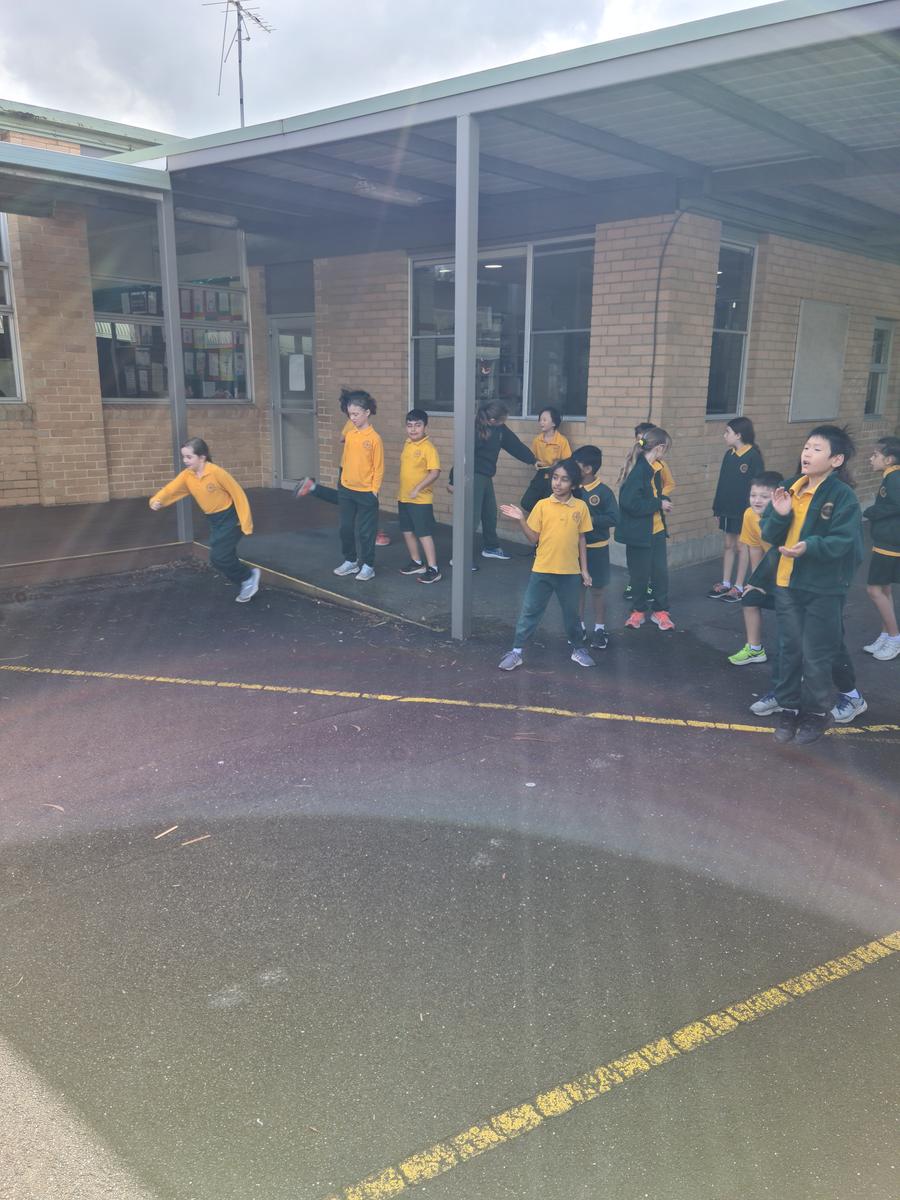




In Relgious Education last term, the students learnt about spirit-filled people and heroes in our lives. In a recent lesson, the students were split into groups and they had to come up with a list of qualities that a hero possesses. Then, they had to come up with a definition for what they believe a hero is. The students came up with a great list which included words such as:
It was interesting to see what each group thought a hero was. Before we focused on heroes in real life, we had a lot of children focusing on superheroes.
This is a fantastic definition that Ben came up with for what a hero is:
‘A hero is a good person who does good things and helps people.’
After some more discussion, we settled on the following definition as a class:
‘A hero is someone who you admire because they have accomplished something special.’
After creating our list of heroic qualities and co-creating our definition, the students had to think of a hero in their own life; someone they believed to be a hero. The task was to write about their chosen hero, why they are a hero to them and what qualities of a hero they possess.
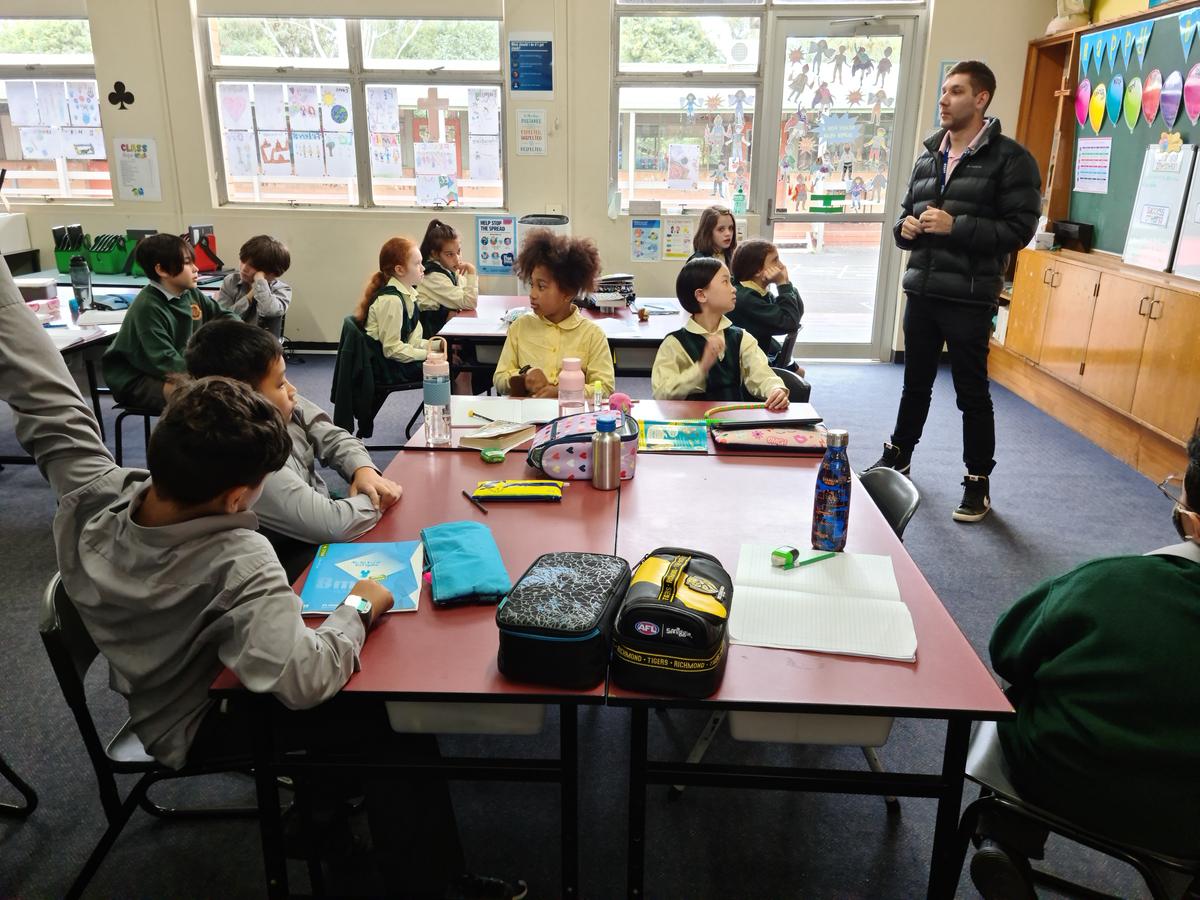
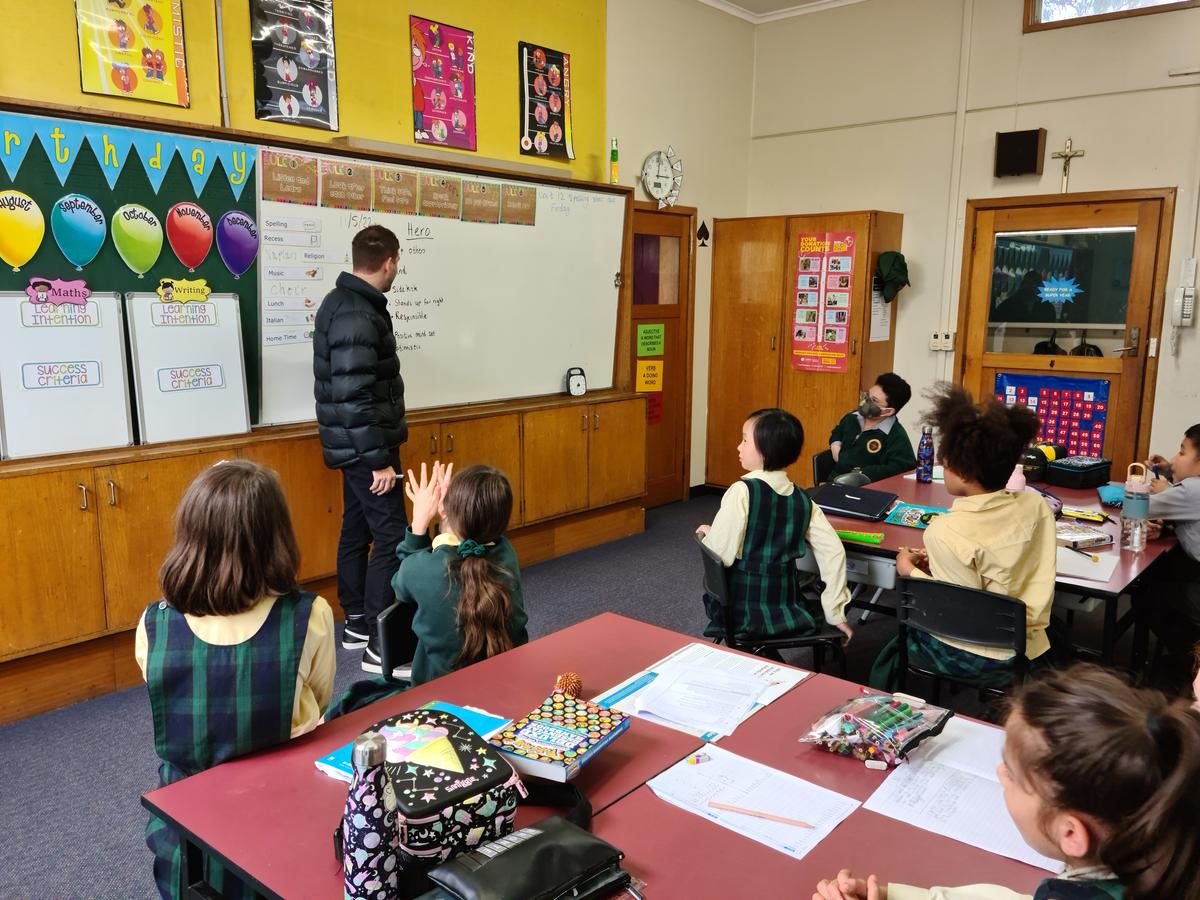
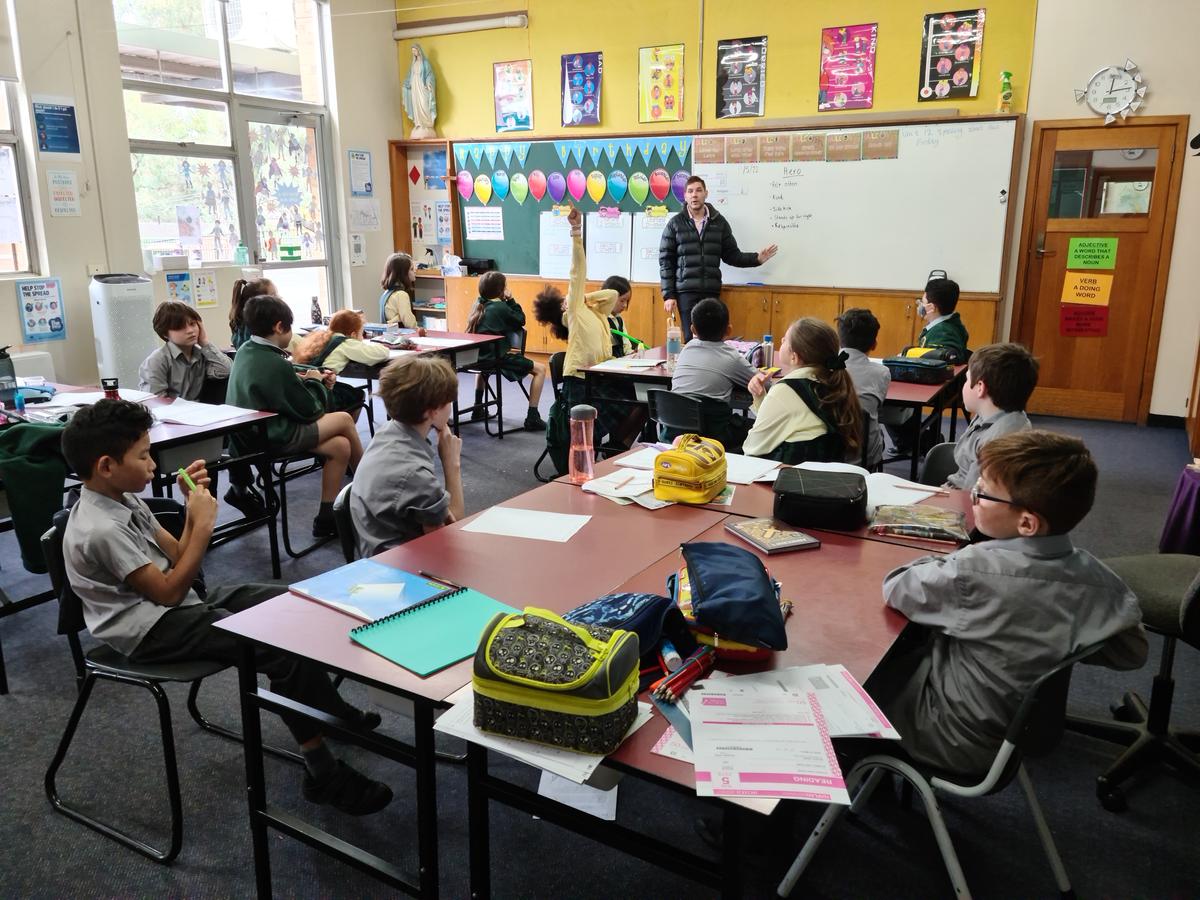



Fruit snack is a type of brain break we have in the Year 3/4 classroom. This usually takes place during the morning block as a transition between lessons.
The children get the opportunity to eat fresh fruit or fresh vegetables and take a little rest while I read our class novel to them.
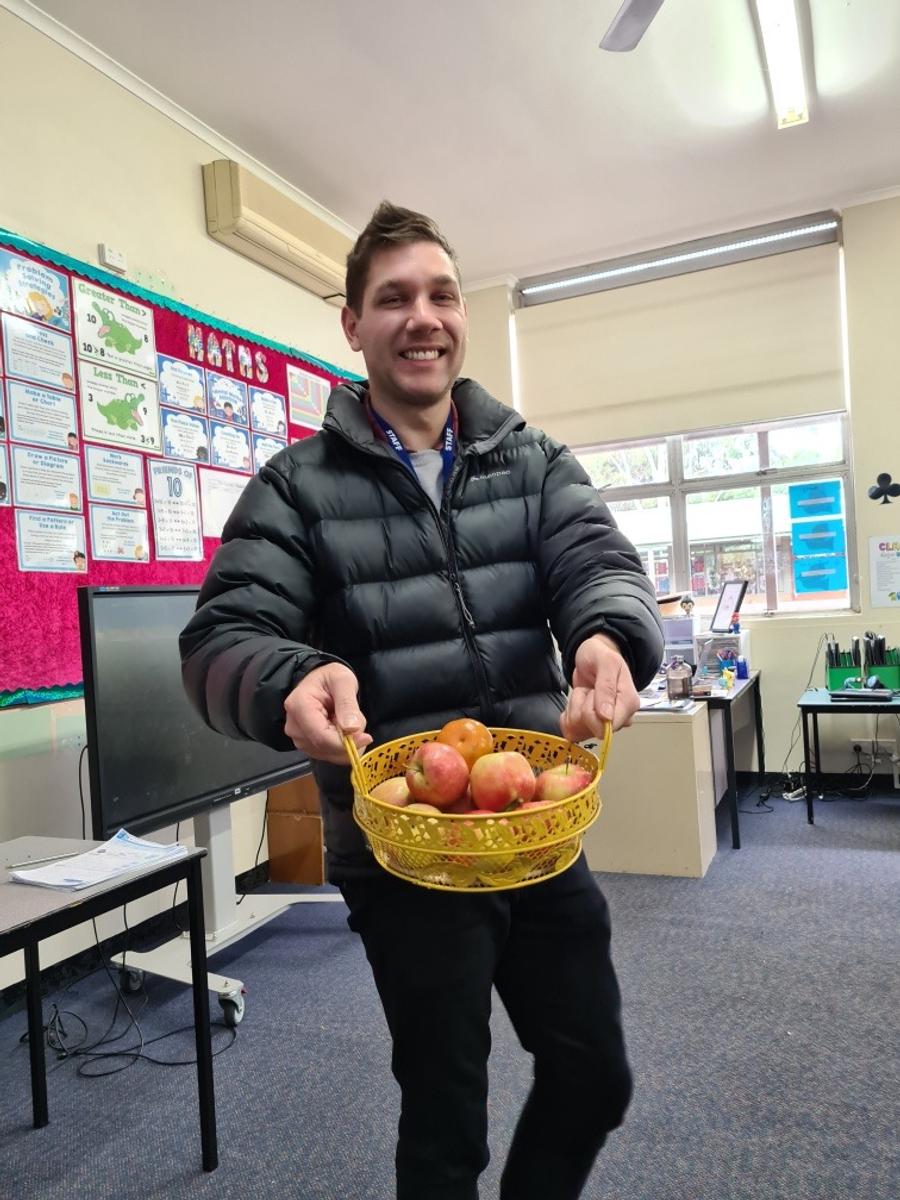
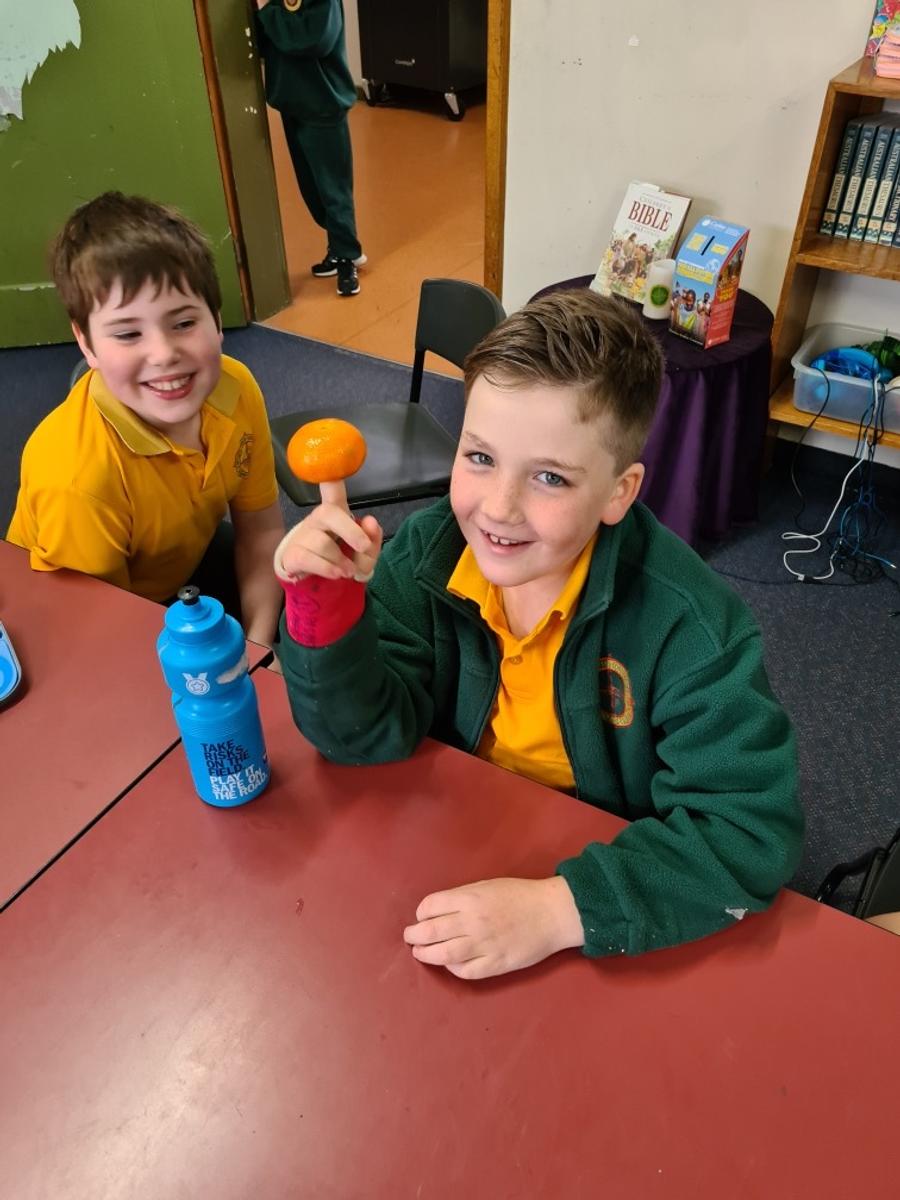

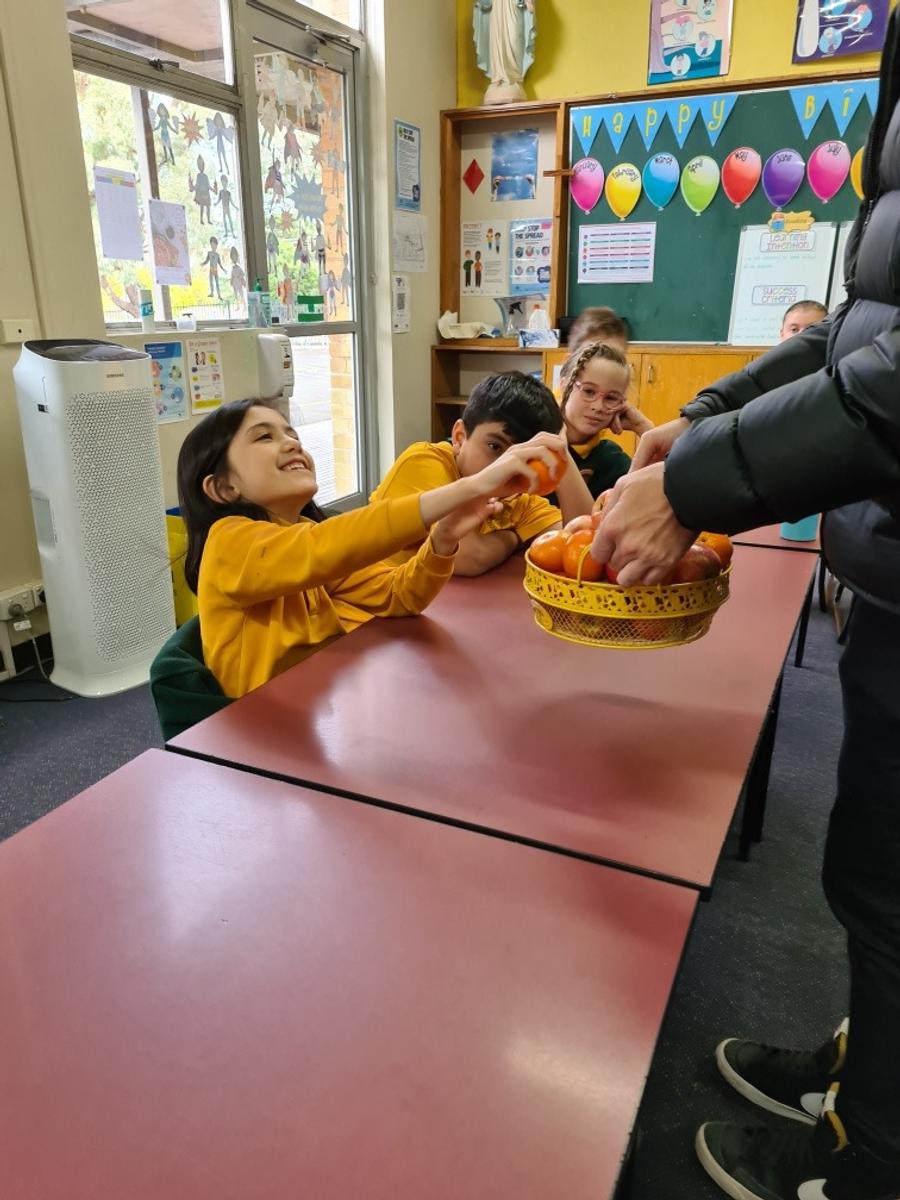




At the moment, we are reading a novel in class called The Falcon’s Malteser by Anthony Horrowitz. This story is about a private detective who is not very good at detecting, so he needs help from his little brother. They work together to solve mysteries. The students are really enjoying it and so am I.
I generally read a chapter to the students during fruit snack so they can listen while they eat. The students enjoy listening to someone read to them and it has a lot of benefits too. Reading aloud to children can stimulate their imagination and expand their understanding. They can focus on creating an image in their head instead of trying to read the words on the page. In addition, it helps to develop their language and listening skills.
Even children who enjoy reading by themselves, can get a lot out of listening to someone else read. It is a good opportunity to stretch their understanding past their current skill level. It also motivates them to find and read books they would never have normally considered. It is also enjoyable for me as their teacher because I can find new books that I have not read before and we can explore the story together.

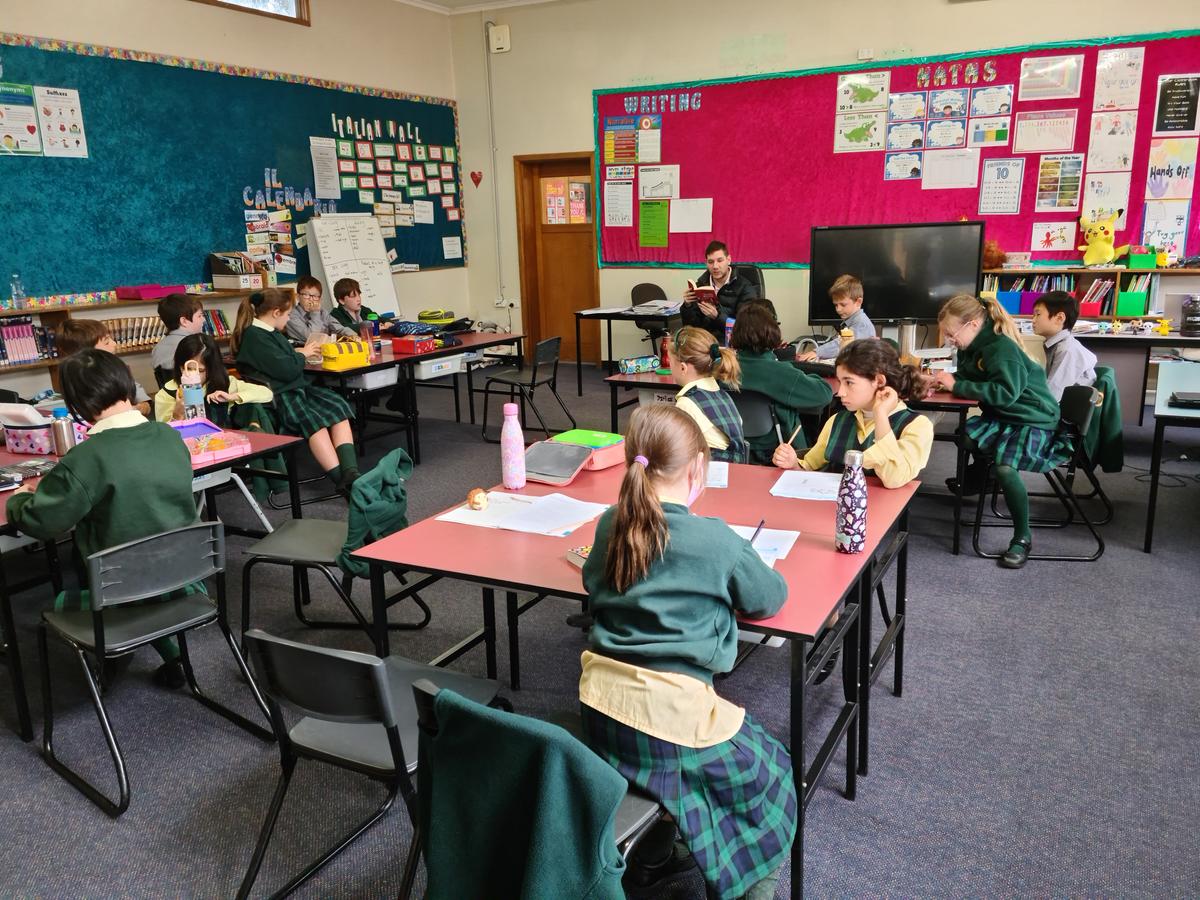


A recent topic in Maths was multiplication. The students have been exploring the secrets behind why 3 x 4 = 12. We have been learning about arrays and repeated addition in our most recent lessons.
An array is a collection of objects or pictures organised into equal rows and columns. This is a useful way to visually represent multiplication sums. The children have been making arrays to practise their times tables and using them to support their understanding of multiplication. Before students start memorising different times tables, they need to understand where these facts derive from.


This example of an array shows 5 dots across the top and 3 dots down. The students would then be able to create a multiplication sum from this: 5 x 3 = 15.
I have been teaching the children to count the array in a faster way by counting by threes or by fives to find the total faster than if they just counted each dot individually.
The students practised this strategy recently by using 2 dice to create their own arrays and turn them into multiplication sums. For example, if they rolled a 4 and a 6, they would have to draw an array to represent 4 x 6 and then work out the answer.
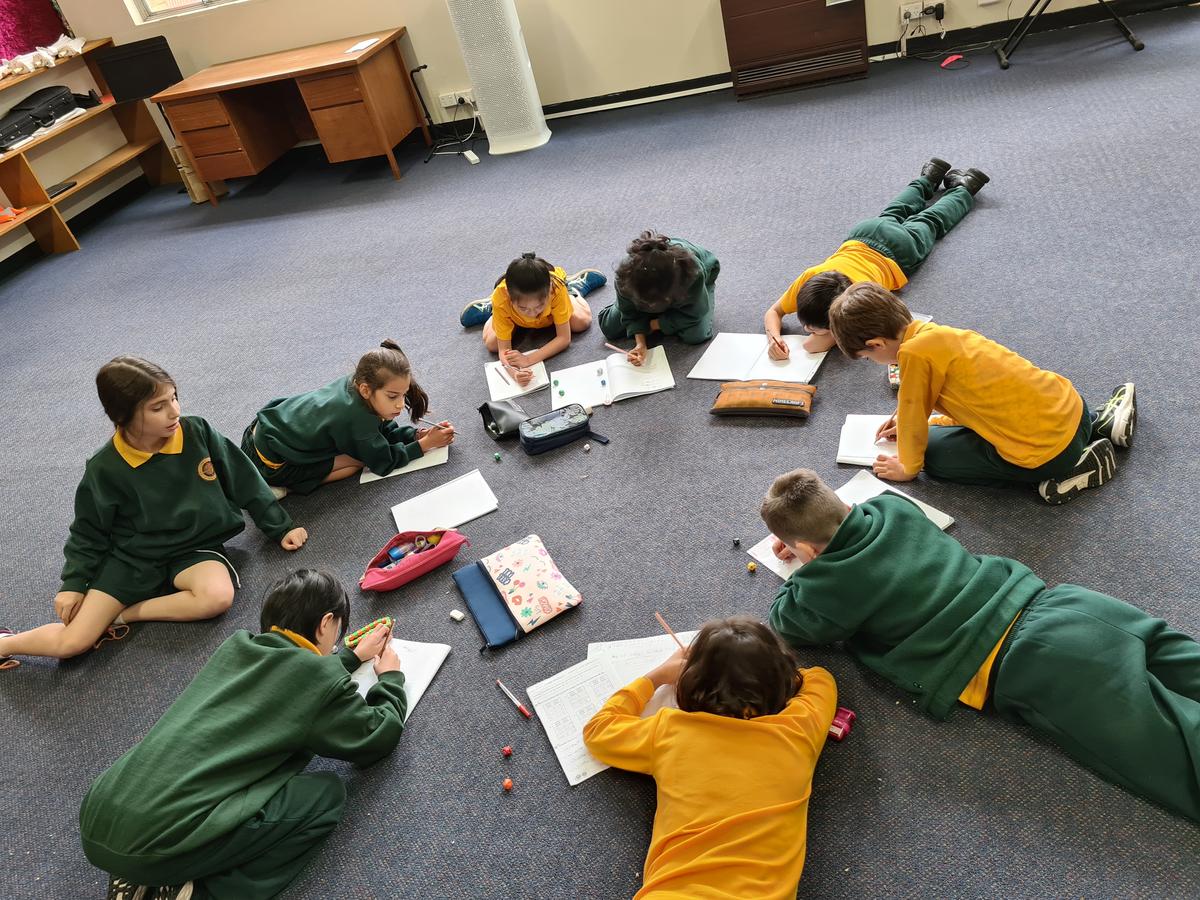

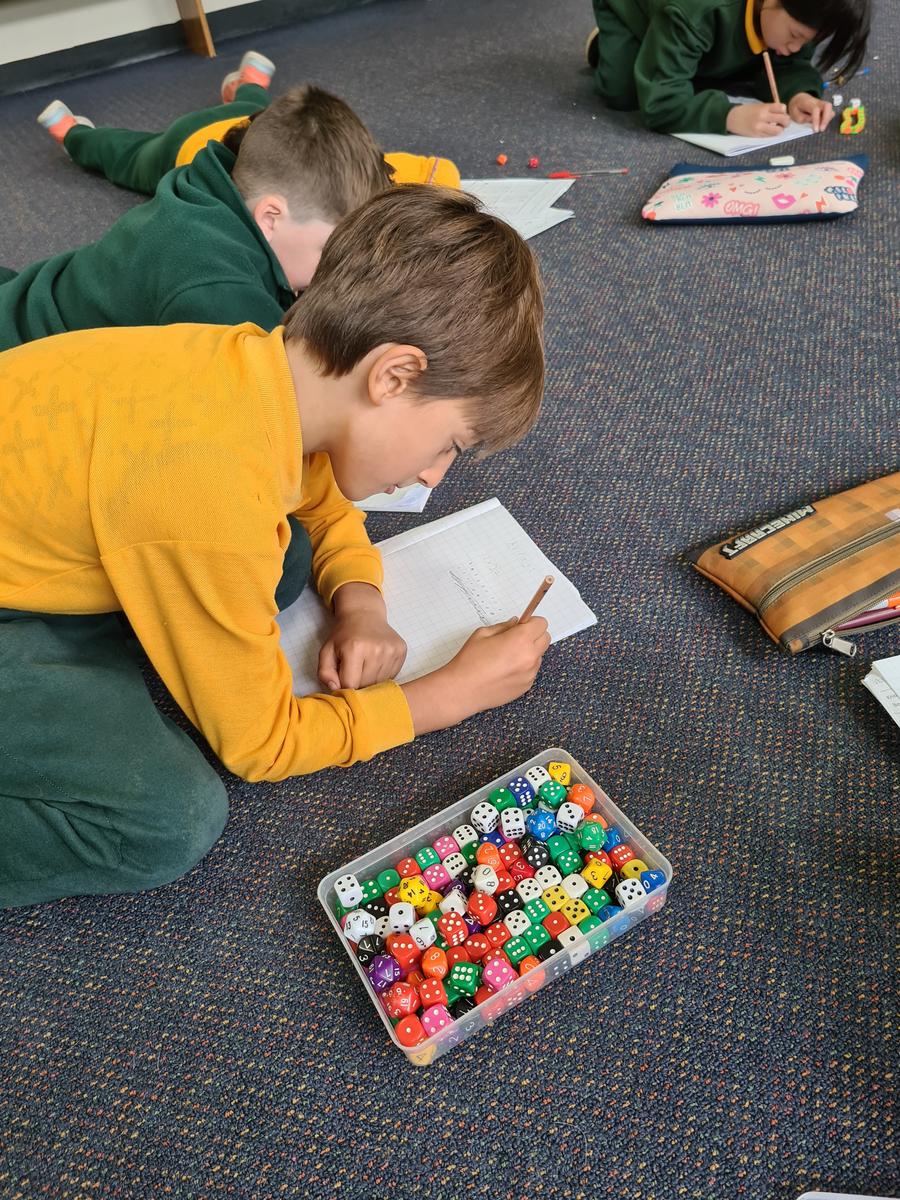



I love using dice as a way for the children to create their own sums because it gives them a chance to take control of their own learning. It also allows them to challenge themselves by using different dice to get higher numbers, such as a 10-sided dice.








Each week in Religious Education, the students explore the weekly Gospel that they would hear at Church on Sunday. Also a different class gets a chance to present this Gospel at our Assembly on Monday. Recently, the students in Year 3/4 had the opportunity to present John 4:23-29:
Jesus said to his disciples, “whoever loves me will keep my word and my Father and I will live in them and love them.” He also said, “peace is what I leave you, my own peace I give to you.” Jesus gave us the gift of peace which comes from God himself. Peace means to be calm, quiet, and free from trouble or disturbance. The peace that Jesus left for his followers was a very special kind of peace. This peace is the feeling you get when you are filled with the Holy Spirit. Being close to God gives us a wonderful feeling of happiness, love and well-being. If we follow Jesus’ teachings, he will provide us with peace.
When we think about the most peaceful part of our day, some people might suggest just before bedtime, when things are quiet and calm. This is a good time to think about what has happened during the day and talk to God about it. Some people may find it easier to talk to God when there is peace and quiet, and freedom from distraction.
The students and I brainstormed a list of words that we thought of when we hear the word ‘peace.’ Here are some of the important words that we came up with:
Love
Kindness
Respect
Care
Calm
Quiet
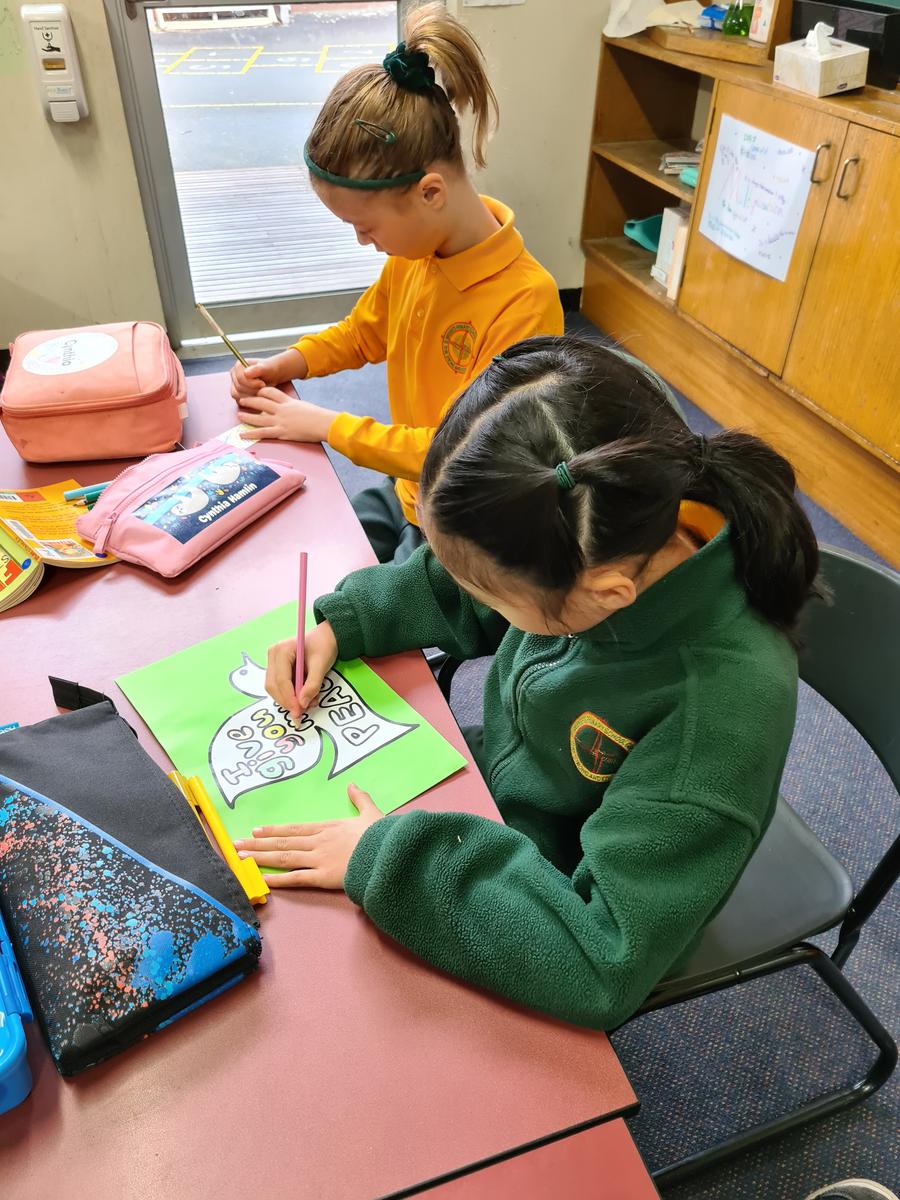

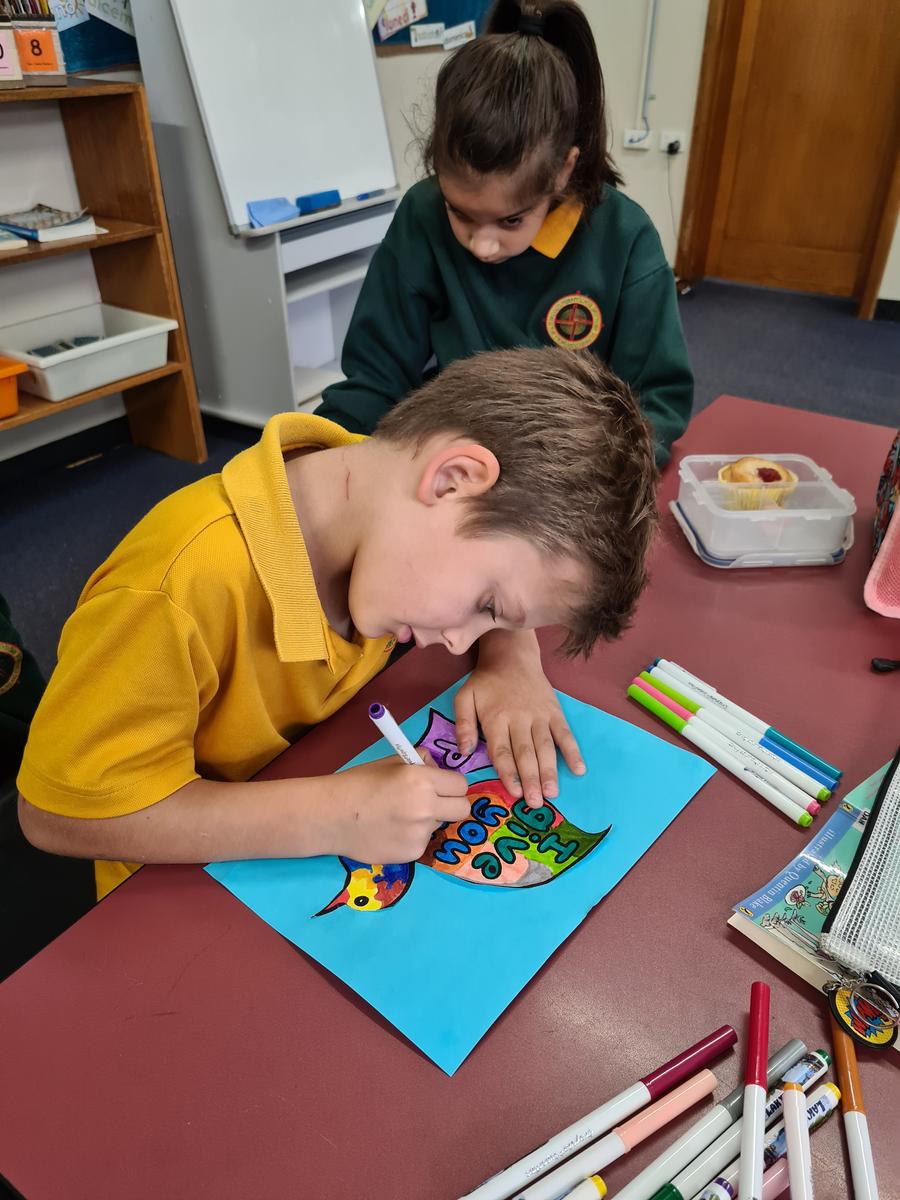



One of my favourite things to teach is genres of writing. The students have been learning about persuasive writing.
Persuasive writing can be quite challenging because there are a lot of devices to learn about. Persuasive devices are tools that are used to help convince others of your opinion. They are used to create relationships between the author and the reader. This is important because the author needs to make the reader feel like they are clever and reliable. Some of the strategies we have been learning about recently are rhetorical questions; personal pronouns; facts; emotive language; and exaggeration.
Rhetorical questions are questions we ask that don’t really need to be answered, or there is an implied answer. For example: Can’t you see how terrible the playground looks when it is covered in rubbish?
Personal pronouns are words such as ‘we’, ‘you’, ‘our’, and ‘us’, which make the reader feel as though they are being spoken to directly; or that they are included in the situation being spoken about.
Facts are pieces of information or evidence that support an opinion. They make the author sound reliable and make the reader feel like they can trust the narrator.
Emotive Language are words that make the reader feel a particular emotion. The author tries to provoke an emotion within the reader by creating an image in their head with description.
An exaggeration, also called a hyperbole, is an inflated or over the top statement which is used to emphasise the author’s point of view.
I enjoyed seeing how the students used these tools to create their own persuasive piece.
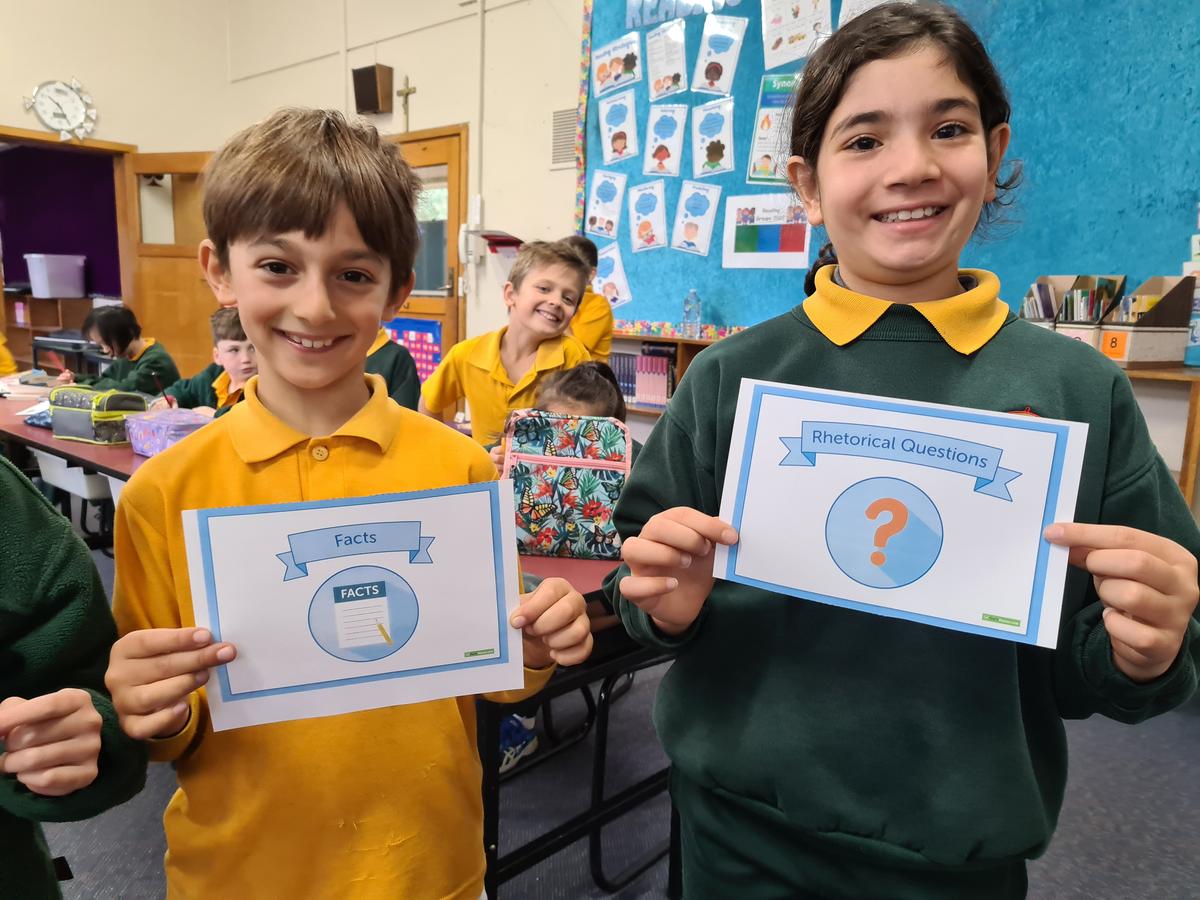
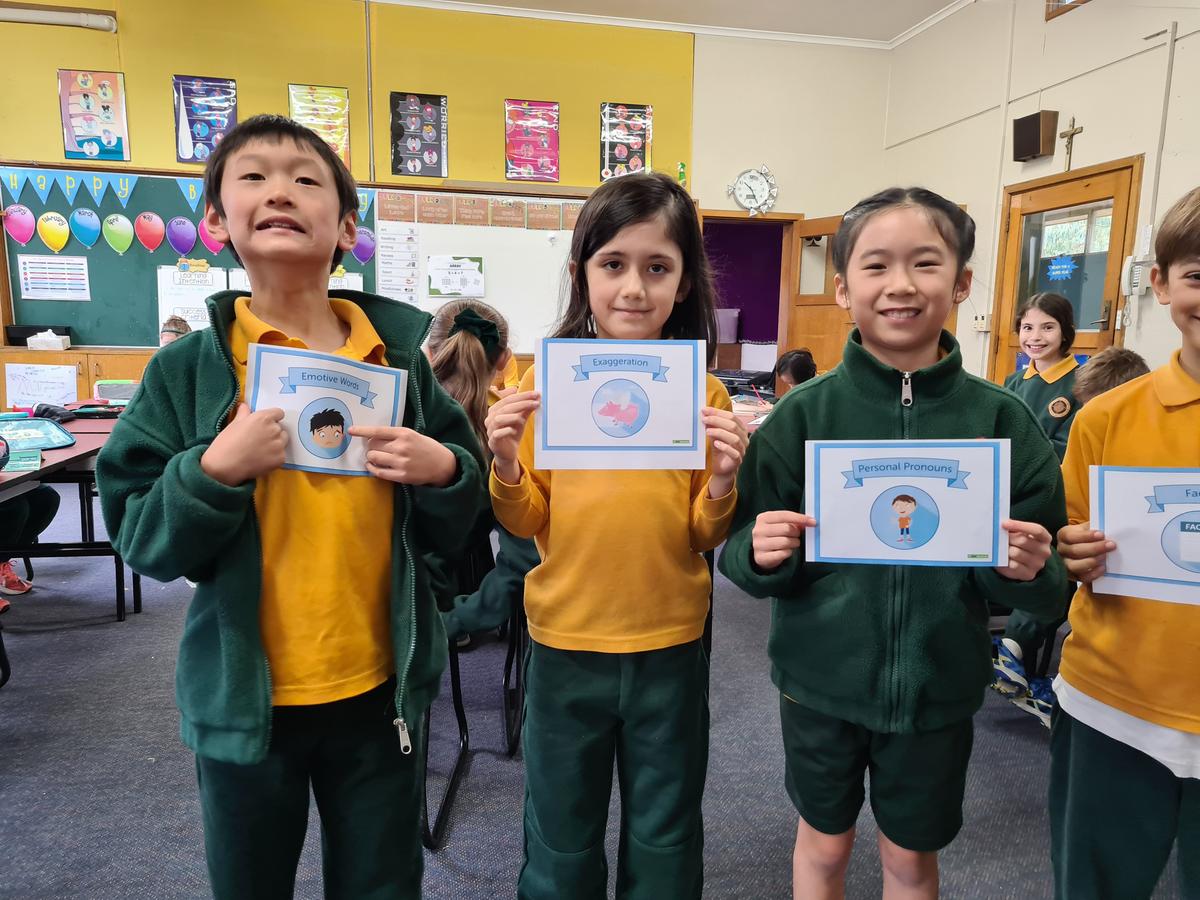


A new addition to my family came to visit school recently. His name is Arlo and he is a 5 month year old papillon puppy. He was very excited to meet the children, just as excited as they were to meet him. Arlo joined me for morning yard duty where he was greeted by lots of little hands which he was very keen to lick.
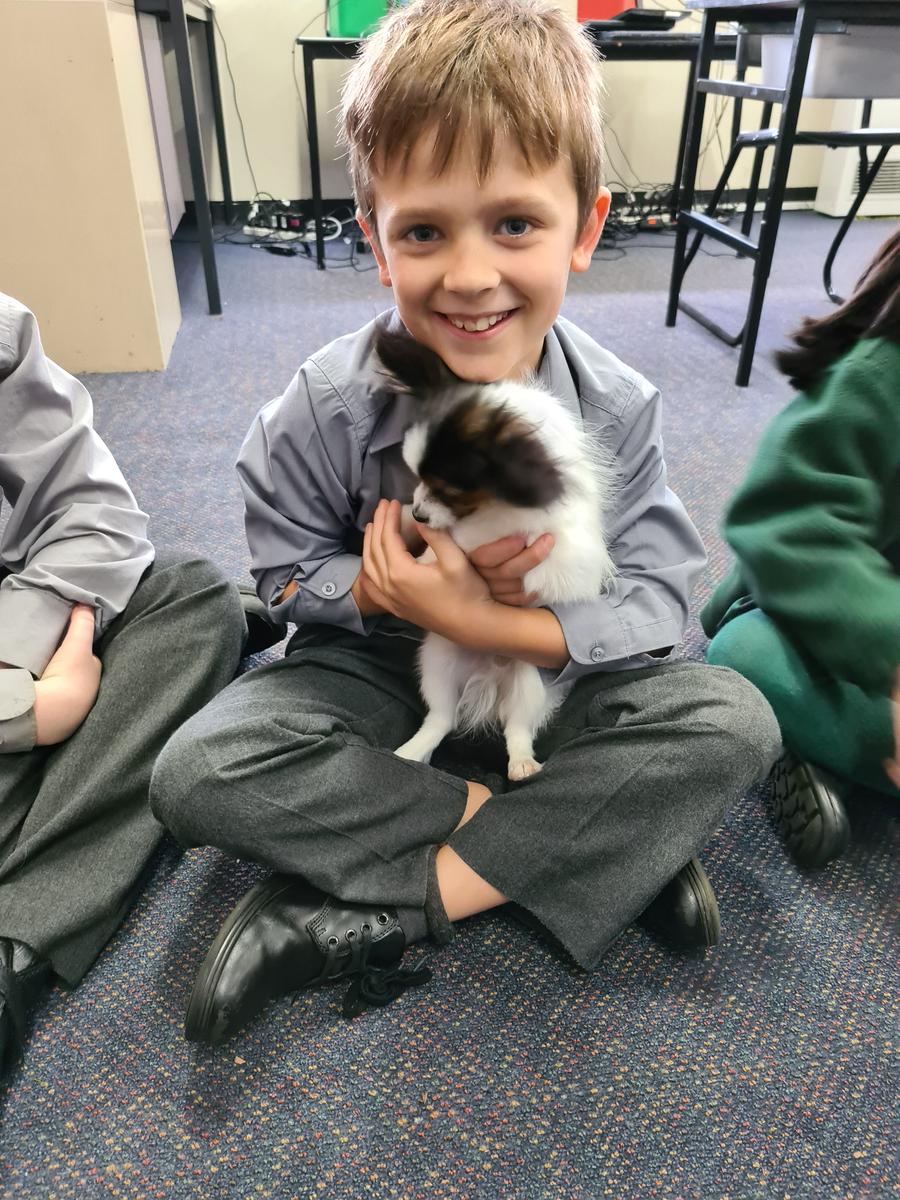
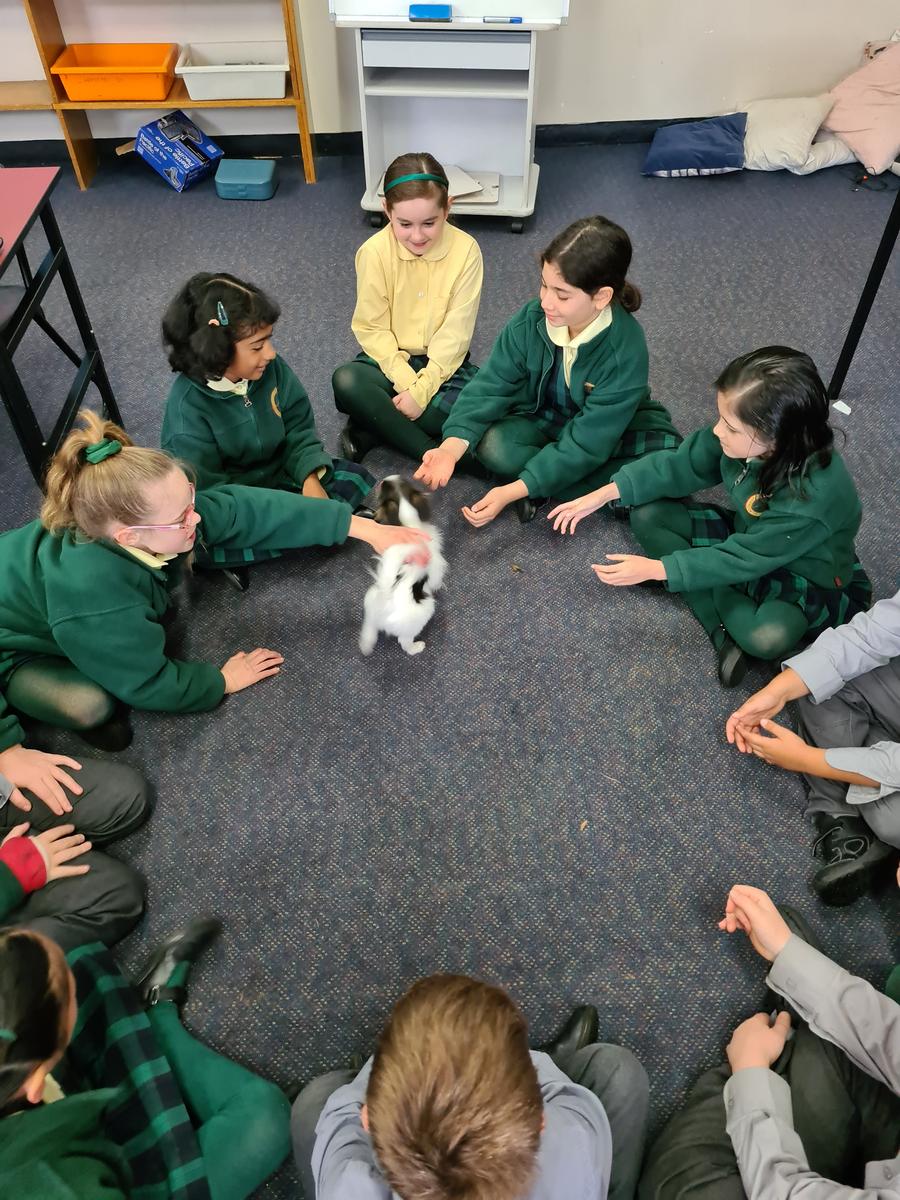


Afterwards, the Year 3/4 students were able to sit in a circle while Arlo roamed around, exploring his new surroundings. The children were in love, and Arlo was so happy to have so many new friends.


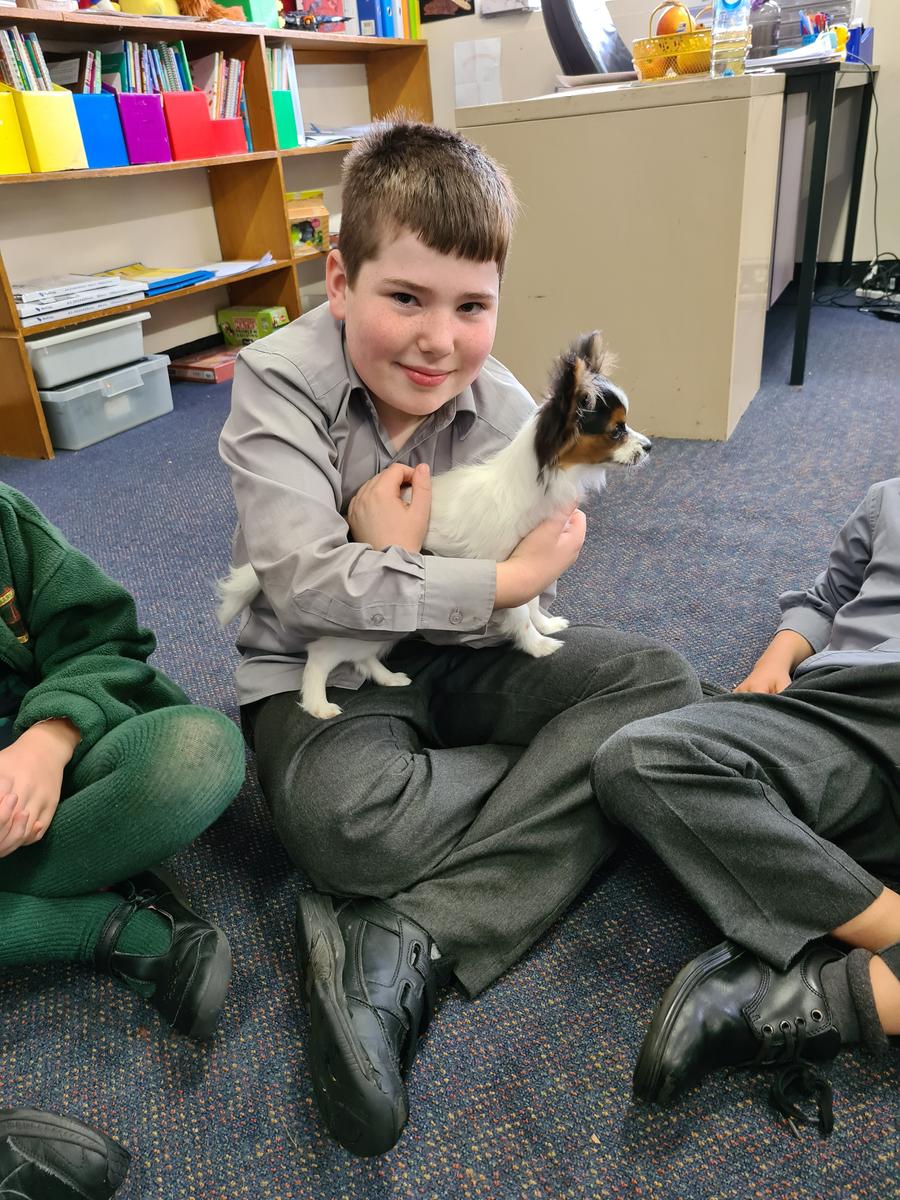



Towards the end of last term, the Years 3 to 6 students, had a very special visit from children's author, Adrian Beck.
Adrian was born in Hobart, Tasmania. He is passionate about raising the reading level of children all across the country. Adrian writes funny stories for kids, he is also a TV producer and a lover of bad ‘dad jokes’. He is a big believer in fostering a love for reading in the younger generation. Adrian has written many children’s books such as Kick it to Nick, Derek Dool, Supercool, Bust a Move and Stuff Happens. He has created a range of engaging and interactive presentations that he shares with schools.
We were very lucky to have Adrian Beck come to visit our school and deliver some thoroughly enjoyable sessions focusing on developing exciting writing and brainstorming creative ideas.
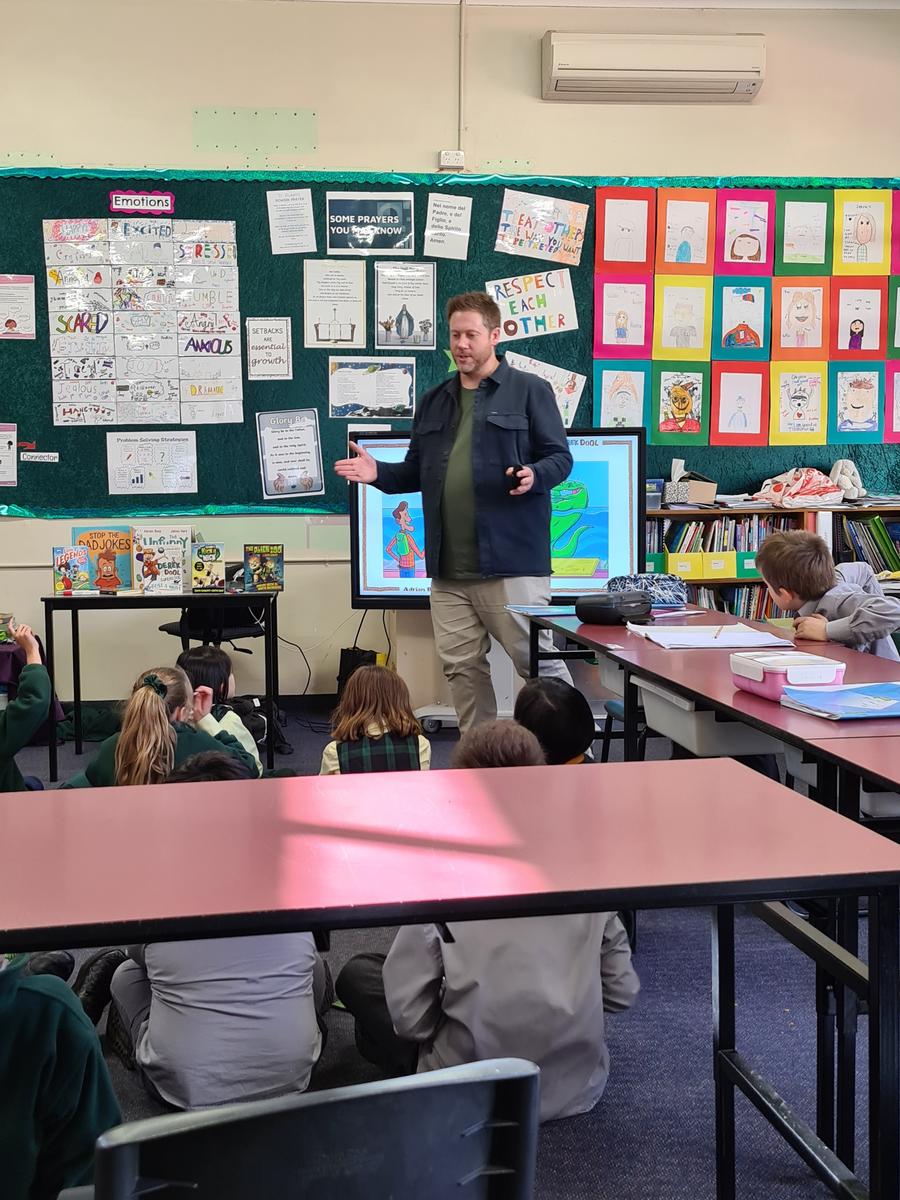
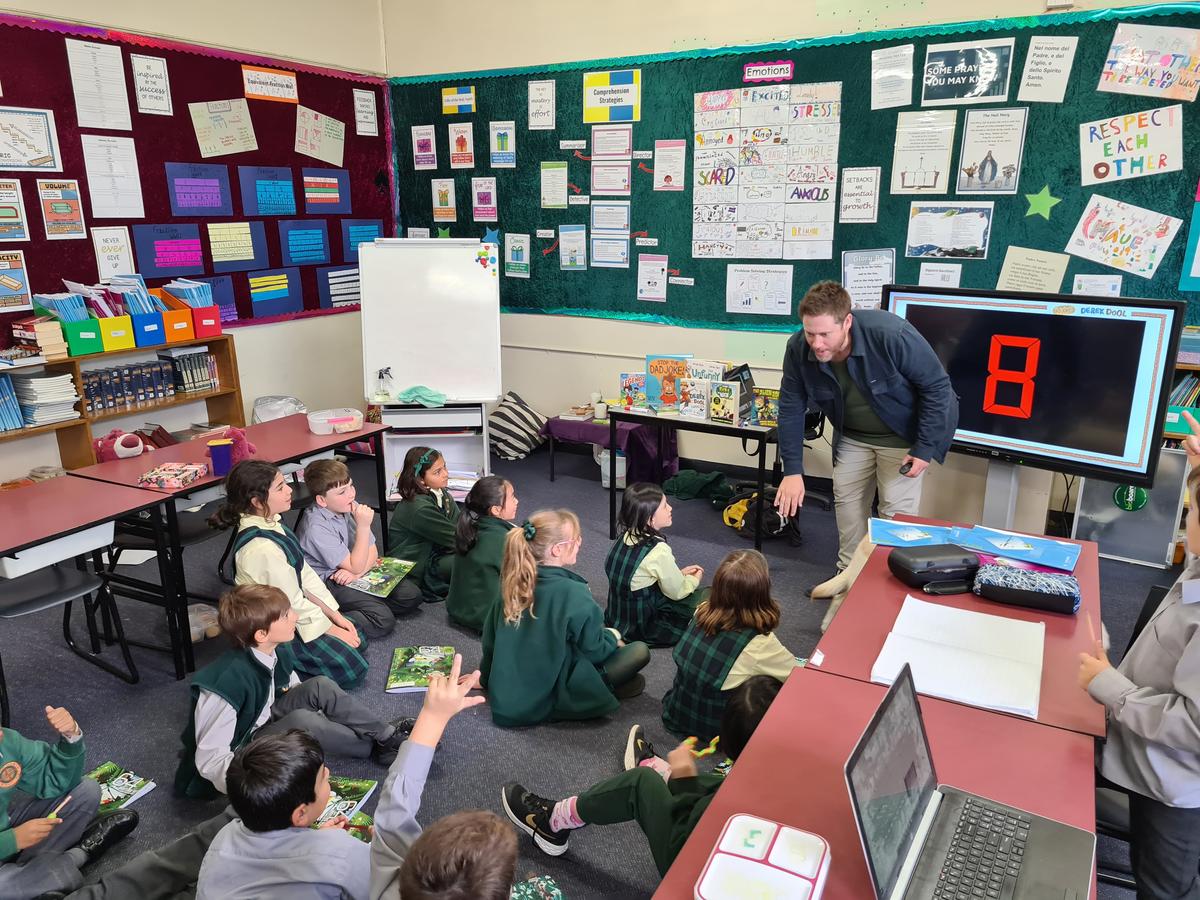
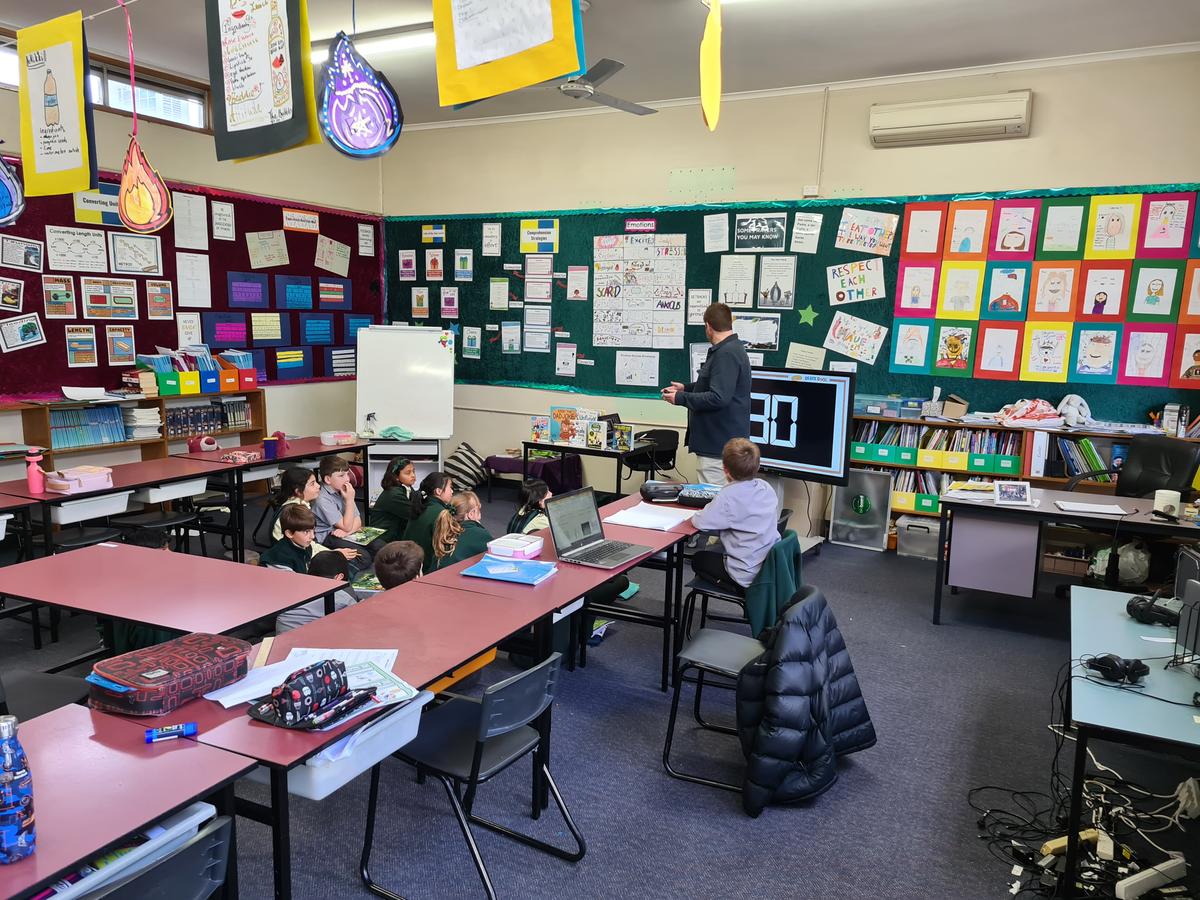



Each class received two exciting lessons with Adrian. In the first session, the kids learned about Adrian’s writing process and how he comes up with ideas for his books. They were able to ask him questions and even got a sneak peek of his next book.
In the second session, Adrian held a Writing workshop where he supported the kids with the picture books they are writing for UpSchool.
It was a fantastic opportunity to have a well known, published children’s author come and present an exciting and engaging presentation to us. I know the children really enjoyed it and it was also enjoyable for the staff.
Adrian Beck was not the only visitor we have been lucky enough to have at St. Bridget’s last term. Over the course of Term 2, Daniel Paoli, an alumni of St. Bridget’s, completed his first placement as a student teacher from the Australian Catholic University.
Daniel is a second year student who undertook a mixed placement round where he observed, planned lessons and taught.
He enjoyed observing one day a week for five weeks where he was able to provide support to small groups. He then completed a two week block where he taught one or two lessons to the Year 3/4 children.
Supporting Daniel was an absolute pleasure. He planned and presented some strong and engaging activities. His lessons were well organised and executed with tenacity. I really enjoyed seeing the lesson ideas he came up with and watching him teach. The children also enjoyed the activities that Daniel planned for them.
Here is one of the Maths games that Daniel did with the students. This game is called ‘3 In a Row’.
The students are split into 2 groups of equal teams.
Each group needs:
Using a number line which could be made out of something as simple as tape or string, label one end ‘0’ and the other end ‘100’.
Each team take turns rolling their 2 dice. They will decide which number to make out of the 2 digits rolled e.g. if they roll a ‘3’ and a ‘5’ they can either make the number ‘35’ or ‘53’
They will need to write the chosen number on a post-it note and stick it on the number line as close to the correct position as possible. Then, the next team will do the same. The goal is to get 3 post-it notes in a row before the other team does. The kids loved this game and it incorporated mathematical concepts such as number, place value, chance and strategy.
At St. Bridget’s, we give the students many opportunities to play sports games and activities. In the Year 3/4 classroom, the children enjoy Class Sport on a Thursday. I like to use this time to teach the kids new games they may not have seen before, or play one of our favourites.
In the past, I have told you about our favourite whole class sport, Dodgeball. Recently, the children learned a new game courtesy of our new friend and placement teacher, Daniel Paoli.
This high intensity game is very simple and only requires some hoola hoops. The players are broken up into two teams. The hoops are set up in a line and the teams start at either end of the line. One player from each team must jump from hoop to hoop, racing the other team to the other end. At some point, the contestants will meet along the path and they must have a match of ‘Scissors, Paper, Rock’.
The winner gets to continue racing to the other end of the hoops, while the loser needs to leave the hoops and head to the back of their line. At this point, a new player will start making their way up the row of hoops and once they meet the opposing player, they too must take part in a game of ‘Scissors, Paper, Rock’. If a player can make it all the way to the other end of the hoops without getting knocked out, they earn their team a point. The team with the most points at the end of the game wins.

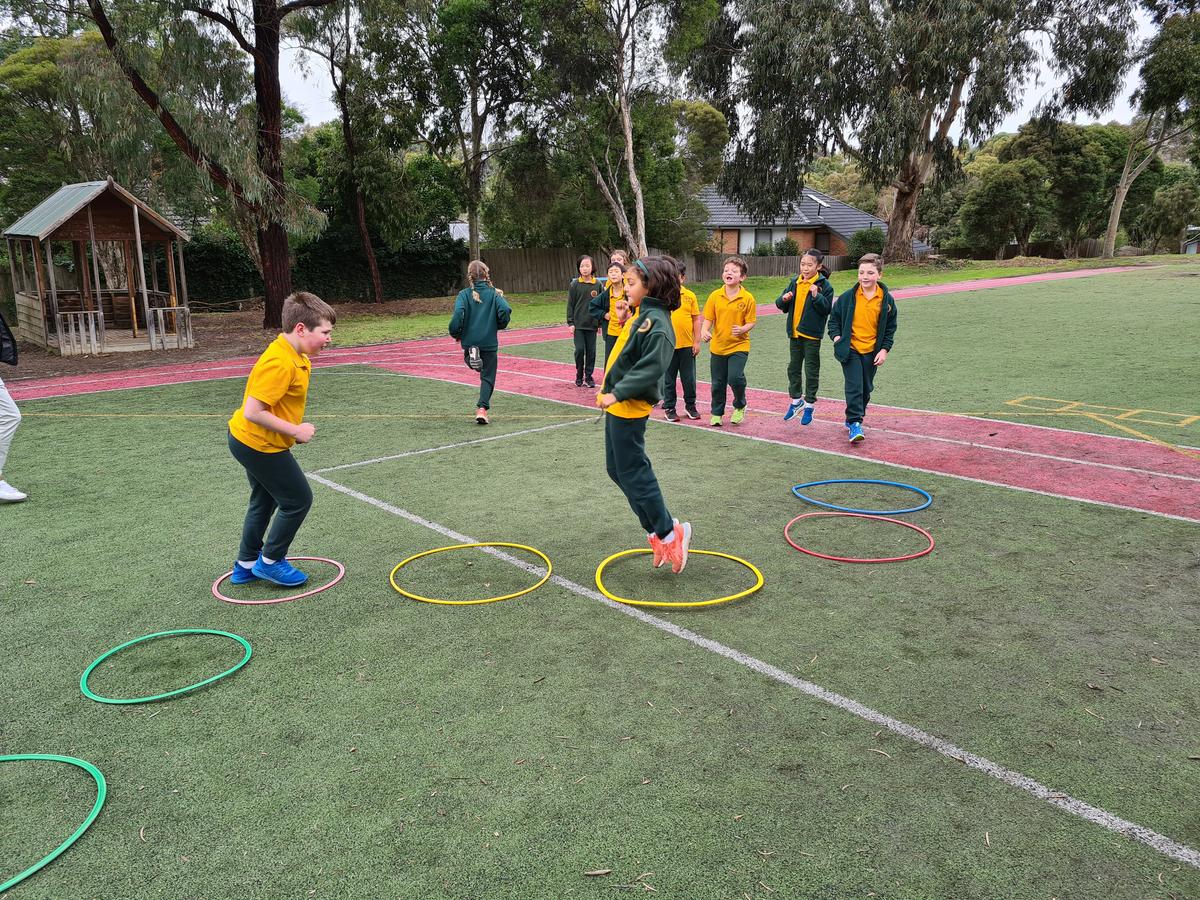
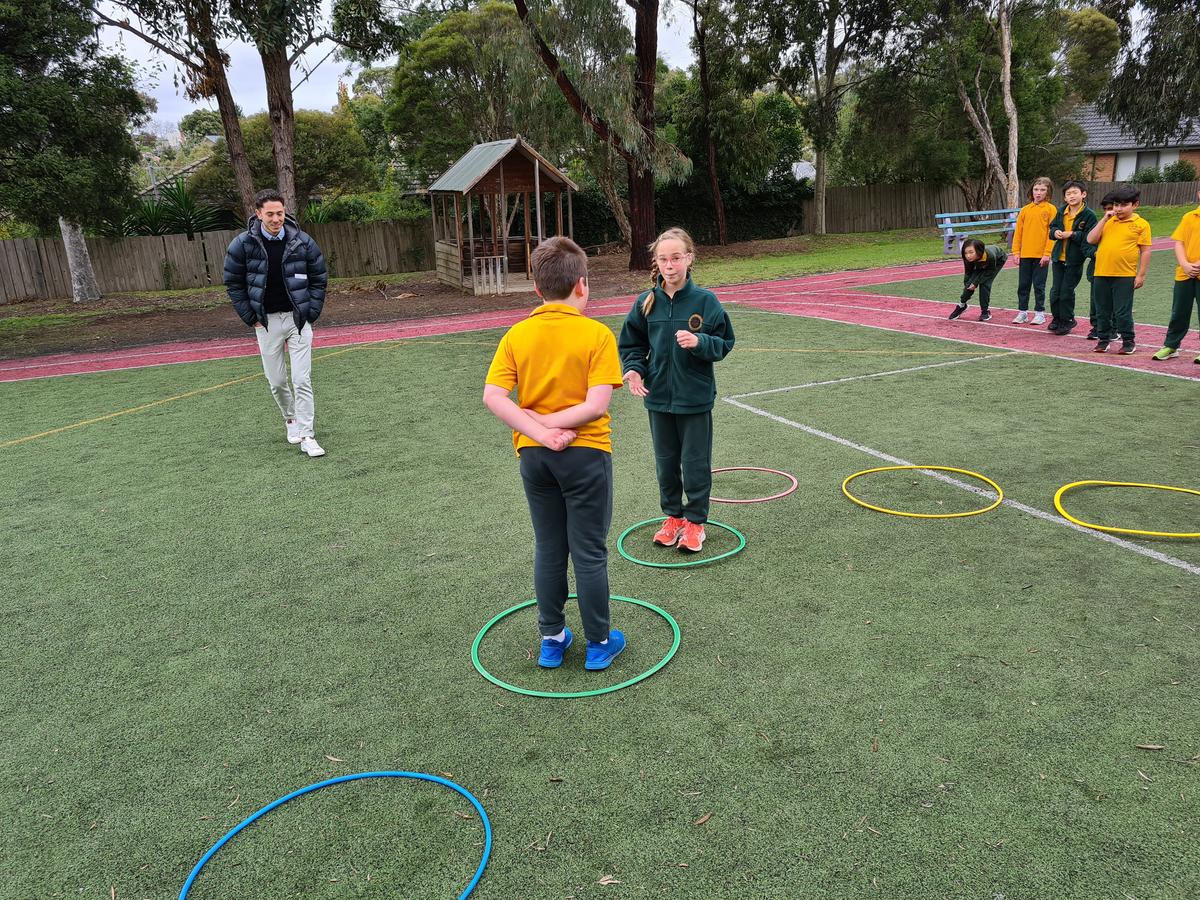



This game was a great way to get exercise and the best part was, since there is an element of chance incorporated into the game, anyone can win.
Kind regards,
Mr Tom Brophy
Year 3/4 Classroom Teacher